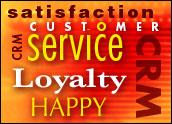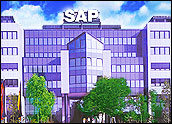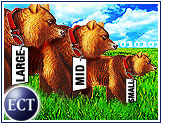
You generally can describe silly season as that time when a large portion of the population takes leave of its senses and confuses day and night. Every semi-organized human endeavor has one. In your world, maybe it’s called spring break or Mardi Gras or the NCAA basketball tournament. Generally, there is news value in the silly season if it’s a little controversial.
If the software industry had to identify a silly season, I’d nominate the time of year fast approaching when analyst firms publish market-share studies and the winner gets important bragging rights for the next year. If there weren’t any controversy, we wouldn’t call it a silly season; thankfully, however, the marketplace has supplied us with a beauty. As it turns out, there are as many ways of counting market share in the enterprise-software sphere as Starbucks has ways of combining steamed milk and espresso.
The silly season is serious business because it determines market leaders and laggards, their relative positions and, to a degree, what they can charge for their products and services. It also can drive share prices and, with them, executive compensation.
Counting Heads
Take the CRM market, for example. During the early-adopter phase, most of the score-keeping was done by tracking revenue generated from sales of CRM software. The company that generated the most revenue was deemed the market-share leader. When CRM suites came to encompass a half-dozen functional areas, such as sales force automation and help desk, analysts also started counting actual seats deployed and the number of corporate customers.
These last two innovations helped balance the picture in the event that a vendor’s numbers were skewed by either a large concentration of seats at a single company or the reverse: lots of small customers but with just a few seats each.
Market share is important because, using it, leaders can make a plausible case to the marketplace that their products are becoming industry standards. There is security for the customer in that knowledge. The phrase, “No one ever got fired for buying [pick a market-leading company],” speaks volumes about the importance of market share.
Under most circumstances, the numbers, however measured, speak for themselves — but not last year and maybe not this year either. That’s because there has been a change in the way major analyst firms count a company’s share of the market. Let me try to explain. For several years, SAP has been bundling its CRM product with its ERP suite in MySAP.
As a result, SAP has been able to legitimately tell analysts that it has a large number of systems “deployed,” or in customers’ hands — but that’s not the same as saying the systems are implemented and in use, which is really what market share ought to represent.
In fact, according to a study published last year by Gartner, only about 25 percent of SAP’s CRM software gets implemented in the first 12 months after a customer accepts the CD, versus 90 percent deployment of some other CRM vendors’ software within 12 months.
Intent To Implement
You might think that’s okay. After all, the percentage of deployed companies is just one measure of market share. There are still issues of implemented seats and generated revenues, and surely they must tell a less skewed story. Well, as they say on TV, not exactly. Because SAP bundles its CRM software with the rest of its MySAP suite, it needs a way to tease out the portion of revenue generated by CRM; for that, the company uses a survey.
According to a Credit Suisse First Boston report from last year, SAP asks its customers in the survey about their intent to implement CRM, from which it “deduces the percentage of the MySAP Business Suite license sale attributable to CRM.” For simplicity’s sake, I might have simply required registration of each seat as it was deployed — just like most of the software you buy for your PC — and correlated that with maintenance revenue, but that’s just me.
Other market-share issues need to be considered these days, too, such as how to account for market share of hosted CRM vendors. Many have long-term relationships with their customers, but they also have relationships that go from month to month. Still, this measure is somewhat easier to track than market share for in-house software because monthly revenue is an excellent barometer of the number of people actually using the products.
Does It Matter?
Gartner and others do a good job of interviewing major vendors and their customers and using the reams of information they gather to make market prognostications. Using this extensive research last year, when they reported 2002 market share for the top six vendors, they reported both gross share and share adjusted for the new “intent to implement” factor.
According to Gartner, raw market share for Siebel was 24.9 percent versus 15.9 percent for SAP, making these companies the top two CRM vendors. But when the intent to implement factors were applied (90 percent for Siebel versus 25 percent for SAP), Siebel’s share fell to 22.4 percent while SAP’s dropped to just 4 percent. The adjusted Gartner data also shows PeopleSoft and Oracle just behind SAP at 3.9 percent.
So, the silly season is upon us, and we await the end of the number-crunching that will tell us statistically which vendor moved more CRM product last year. But does it matter? Not anymore, I think. In an early-adopter market, annual market share is important because all products are more or less the same. But as markets grow, vendors differentiate, and buyers alter their questions from, “What’s your market share?” to, “How many customers just like me do you have?” and, “When can I talk to them?”
At that point, all of the market share in the world won’t be a good substitute for a small handful of already-implemented customers who can say, “Been there, done that.”
Denis Pombriant is former vice president and managing director of Aberdeen Group’s CRM practice and founder and managing principal of Beagle Research Group. In 2003, CRM Magazine named Pombriant one of the most influential executives in the CRM industry.


























































